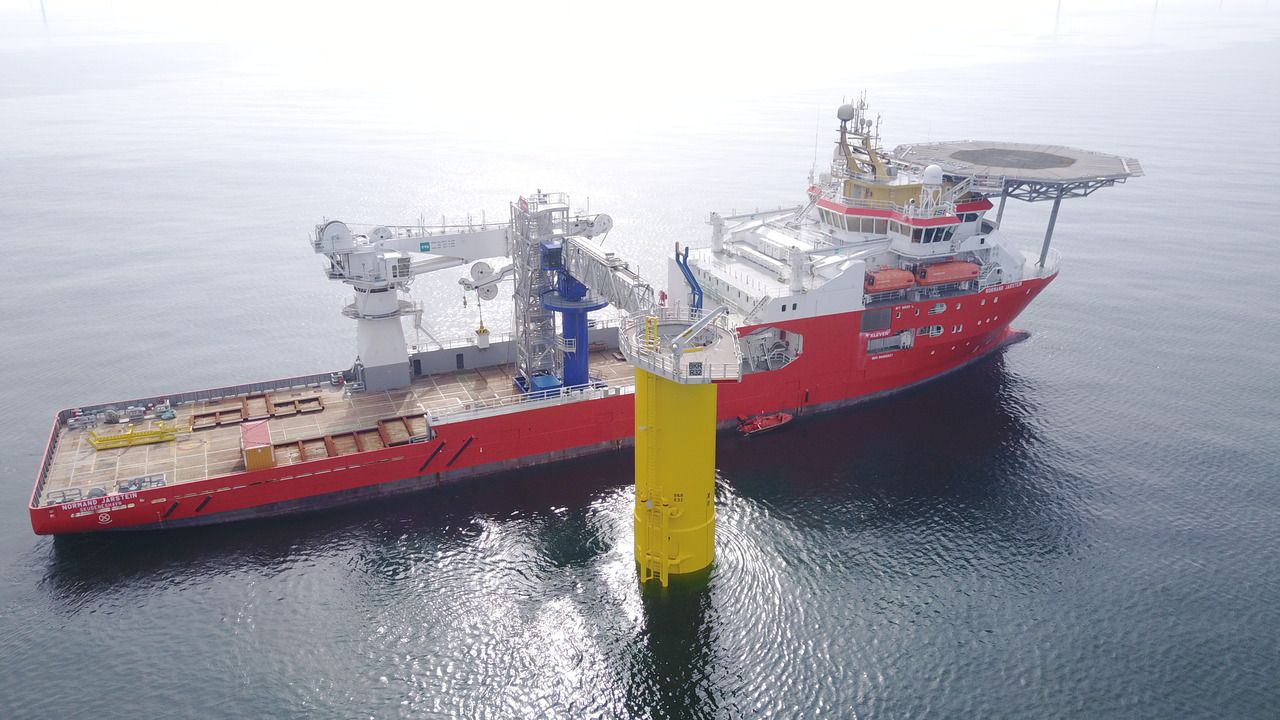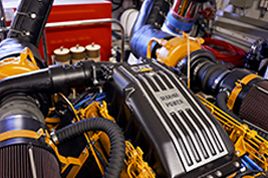

Sign In
Welcome! Sign In to personalize your Cat.com experience
If you already have an existing account with another Cat App, you can use the same account to sign in here
Register Now
One Account. All of Cat.
Your Caterpillar account is the single account you use to log in to select services and applications we offer. Shop for parts and machines online, manage your fleet, go mobile, and more.
Account Information
Site Settings
Security
Biofuels Decoded: Which One Is Right for Your Vessel?
Biofuels offer the maritime industry fuel flexibility, however selecting the biofuel that is most appropriate for a given vessel depends upon several factors, such as application requirements and region. Lower-carbon intensity fuels can reduce lifecycle greenhouse gas (GHG) emissions, even though tailpipe GHG emissions are essentially the same. This helps support vessel operators’ climate-related objectives.
Cat® diesel engines have offered the flexibility to operate on lower-carbon intensity fuels for more than a decade in land-based sectors, and that field-proven technology is now being leveraged in maritime applications.
To determine if biofuel may be appropriate for your vessel, it’s important to understand the advantages and considerations of the primary options available today.
Key Biofuel Options and Benefits
Biodiesel, or fatty acid methyl ester (FAME), can be manufactured using vegetable oil, animal fat, recycled restaurant grease and even natural gas. FAME is often blended with conventional diesel fuels, and many Cat engines can accommodate specific FAME blends depending upon engine guidelines. Three common biodiesel blends are readily available: B5 (up to 5% biodiesel by volume in 95% diesel fuels), B20 (up to 20% biodiesel) and B100 (100% biodiesel), also known as “neat” biodiesel.
Like FAME, renewable diesel (also known as hydrotreated vegetable oil or HVO) is sourced from vegetable oils and fats, however, it’s processed differently and the end product has different chemical properties. HVO, which can be blended with diesel or used at 100% (neat), burns thoroughly and reduces visible smoke and particulate matter. Its performance is comparable to diesel.
Biofuels’ ability to reduce lifecycle GHG emissions stems from their source – the raw material that creates biofuels are waste materials from different industries. Restaurants' cooking grease is just one example of many potential waste-derived feedstocks. As a result, the capacity to produce biofuel from waste raw materials is limited by the production of the waste itself.
Key Considerations to Optimize Biofuel Use
While biofuels offer compelling advantages, there are unique nuances that influence their use. For example, FAME and HVO price and availability can vary considerably based on geographic region. Substantial investments in methanol supply specifically intended for maritime use1 have already begun, which will positively impact availability and infrastructure.
Blending and operational requirements must also be considered. Blending FAME with diesel fuel by more than 5% requires increased engine monitoring. The type of application must also be weighed when evaluating FAME and HVO. FAME is best suited for prime applications while HVO can be used in both standby and prime applications.
Biofuel stability and compatibility can vary based on the fuel type. FAME has a shorter shelf life and lower oxidation stability than conventional diesel. It’s also more likely to dissolve and absorb water, which can lead to microbial growth and contaminants that may clog filters. For engines with aftertreatment devices, B20 must be used due to naturally occurring metals. Vessel owners should also be aware that FAME’s operability in cold temperatures and its material compatibility differs from diesel. HVO, in contrast, is not only a drop-in replacement for diesel but also can be stored up to 10 years and resists contaminants, oxidation, water absorption and temperature changes.
Biofuel Success Is Application Dependent
Any changes to fuel can have an overall impact on vessel reliability, operating costs, and maintenance intervals. Careful evaluations are necessary to appropriately match an energy source to a specific vessel to help vessel operators achieve a desired objective. The experience of the world’s largest tug operator demonstrates that one fuel type isn’t necessarily suitable across all vessels or operating profiles.
Caterpillar Marine is engaged with global towage leader Svitzer2 in the company’s EcoTow initiative. Svitzer is currently operating a fleet of Cat-powered tugs running on different lower-carbon intensity fuels at 100%. The initiative’s initial five-vessel pilot program in London used two Cat 3516C main engines and two C4.4 auxiliary engines running on 100% HVO. Following the success of that first pilot, Svitzer conducted a second pilot, in the Netherlands, with two vessels using the same engine configuration but running on 100% FAME. Svitzer and Caterpillar Marine are currently collaborating on methanol dual-fuel solutions for newbuilds and existing tugs.

Navigating a Biofuel Future
Caterpillar Marine is committed to providing flexible solutions that enable vessel operators to tap into the benefits of biofuels while meeting their unique operational needs. Lowering lifecycle GHG emissions while keeping tailpipe GHG emissions essentially unchanged is a priority for many in the maritime industry. Caterpillar’s continuous innovation is increasing the accessibility of lower-carbon intensity fuels without sacrificing power or performance. Whatever type of fuel vessel operators choose, Caterpillar has a field-proven solution.
1. Maersk to deploy first large methanol-enabled vessel on Asia - Europe trade lane, December 7, 2023. https://www.maersk.com/news/articles/2023/12/07/maersk-to-deploy-first-large-methanol-enabled-vessel-on-asia-europe-trade-lane


